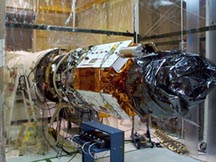The TRACE spacecraft mated to the Pegasus XL rocket on which it will be launched.
Click on image for full size
Courtesy of NASA
TRACING the Sun...
News story originally written on April 2, 1998
The TRACE spacecraft was launched April 1st at 9:42 p.m. EST from the central California coast. TRACE stands for Transition Region and Coronal Explorer. TRACE will operate in polar orbit about 400 miles above the Earth.
This spacecraft has four telescopes aboard that are sensitive to the extreme-ultraviolet and ultraviolet wavelengths of light. Looking at these wavelengths, the TRACE will be able to focus in on the transition region of the Sun, that region between the cool surface (only 6,000 degrees Fahrenheit!) and the corona where temperatures are as much as 16 million degrees Fahrenheit.
The TRACE is being launched in a very timely manner...just in time for the solar cycle to reach its peak. TRACE joins in a fleet of spacecraft studying the Sun during this active time (like the ACE and Ulysses spacecraft).
"TRACE was completed on time, under budget, and met all performance goals," said Jim Watzin, Small Explorer project manager, NASA Goddard. "I'm really proud of this team. They have produced a magnificent observatory in a manner that saved NASA nearly $9.7 million." TRACE, which costs $49 million, is the third spacecraft in the Small Explorer series of small, relatively low-cost missions.
You might also be interested in:
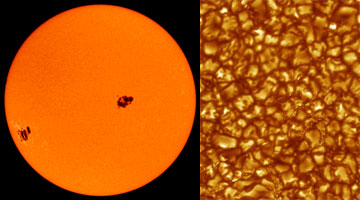
Most of the energy we receive from the Sun is the visible (white) light emitted from the photosphere. The photosphere is one of the coolest regions of the Sun (6000 K), so only a small fraction (0.1%)
...more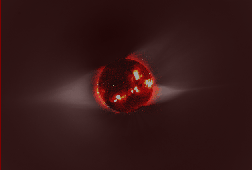
Rising above the Sun's chromosphere , the temperature jumps sharply from a few tens of thousands of kelvins to as much as a few million kelvins in the Sun's outer atmosphere, the solar corona. Understanding
...more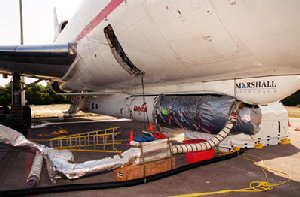
HESSI stands for High Energy Solar Spectroscopic Imager. HESSI stands to provide data that would help scientists make great strides in understanding solar flares. HESSI will study where flares occur on
...more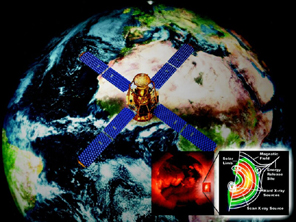
HESSI finally has a launch date of January 24, 2002. HESSI has had a hard time getting off the ground! First the probe was damaged in ground vibration testing and had to be repaired. Then there were problems
...more
HESSI had a hard time getting off the ground! First the probe was damaged in ground vibration testing and had to be repaired. Then there were problems with HESSI's launch vehicle. But HESSI was launched
...more
The launch of solar satellite HESSI has been postponed indefinitely! When the Pegasus rocket designed to boost the X-34A hypersonic vehicle went out of control on June 2nd and had to be blown up, NASA
...more
It was another exciting and frustrating year for the space science program. It seemed that every step forward led to one backwards. Either way, NASA led the way to a great century of discovery. Unfortunately,
...more


